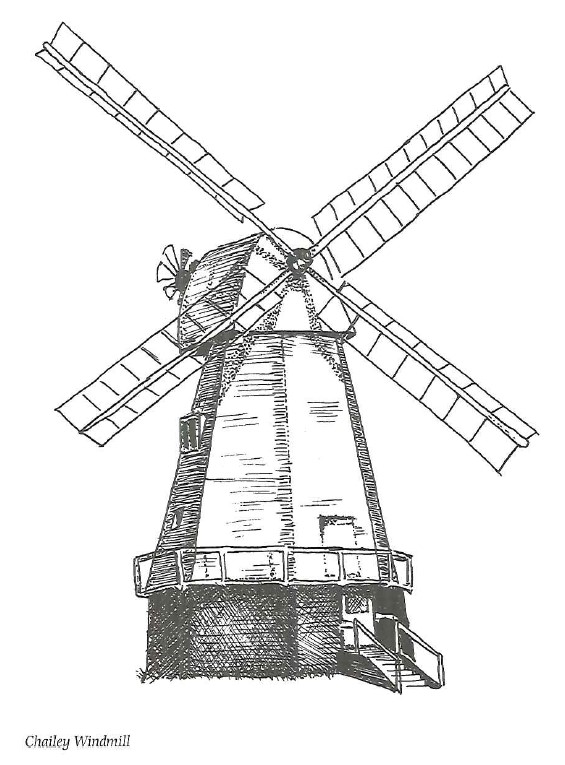Unusual things happen in the giant fireplace that dominates the beamed interior of The Queen’s Head, an old coaching inn.
When landlord John Cook closes for the night he always makes sure that all is well with the fire. The next morning, as often as not, he will come downstairs to the bar and find that the logs are not where he left them or the rich variety of ornaments that adorn the inglenook have mysteriously Swapped places. He can’t explain the mystery. Perhaps it is a ghost with a leaning towards interior design.
The pub was originally the property of the Abbot of Battle. It was first registered as a trading house in 1523 and in its coaching days was the turning point for the Eastbourne run. The stables still stand at the back of the building, but the old stone horse trough produced by the Metropolitan Drinking Fountain and Cattle Trough Association’ is a bit of an imposter. It was bought by the landlord in recent years to prevent it being broken up and used in road foundation.
Strange how village history when passed on by word of mouth often contains a vivid phrase that brings the past alive and adds instant authenticity. Ask a Sedlescombe native about the explosion at the gunpowder mills and they will always add the phrase “… and it happened before breakfast.’ Four men died in this early morning disaster in December 1764 when the sifting house blew up with a ton of gunpowder inside, and James and Thomas Gilmore, the two sons of the proprietor.
The memory of this hazardous industry lives on in the name of the nearby Powdermill Reservoir. Gunpowder had superseded iron-working, an industry still recalled by the fireback fixed into the wall of the Bridge Garage (once a blacksmith’s) which is dated 1649 and depicts Richard Lenard and the tools of his trade. He was the craftsman who fashioned the firebacks before they were moulded.
If you see a plume of smoke rising from the depths of Pettley Woods the chances are it is not a barbecue enthusiast with a fondness for lunch in out-of-the-way locations but men hard at
Work charcoal burning, a trade which has survived in the area for at least 500 years. There is still a demand for charcoal today for use by industry and today’s exponents can trace their roots back to 1424 when the Battle Abbey account books state that the charcoal burners in ‘Pettelee Wood’ had been paid 6/8d.
An old craft has been given a new lease of life here in more recent times. Farmer Richard Williams opened up a sideline making tiles and bricks at Aldershaw Farm. The little works and kiln cost him £6,000 to set up with a view to turning out about 600 bricks a week using local clay.
The village green has what appears from a distance to be the most picturesque bus shelter in the county. In fact the pillared structure is a well house built in 1900 over the parish pump. It is a handy place on which to record Sedlescombe’s triumphs for tidiness: Sussex Rural Community Council plaques pay testament to a string of best-kept village and anti-litter awards down the years.
The green was the scene of the village Friendly Society’s fete every May Day. Perhaps it was on such occasions that the Sedlescombe Ribbon Dance was performed; it would be interesting to know exactly what the 12 dancers did with their ribbons.
The name of the village has become synonymous with the Pestalozzi Children’s Village which was established after the Second World War at Oaklands, once the home of the painter Hercules Brabazon. The village, run by a trust, educates poor children from Third World countries. They later return to their homelands to put the skills they have learned here to good use.
A school with less ambitious aims existed in the mid-18th century, a charity establishment to give local children a grounding in the three Rs. In 1755 the elderly master retired and the only man found to replace him was a lad of 18 called Thomas Colbran. He must have been a wise choice for he stayed in charge for 57 years, surely a record for a schoolmaster. The Victorian writer Coventry Patmore had a liking for Sedlescombe, describing it as surpassing all other Sussex villages except Mayfield in its beautiful half-timbered houses of the XVI and XVIIIc. The chief inn of the place is a model of many gabled beauty and bad interior arrangement.
Hazel trees grow in abundance around here, but make sure you do not go nutting on the sabbath. If you go nutting on Sundays the Devil will come to help and hold down the boughs for you.’
